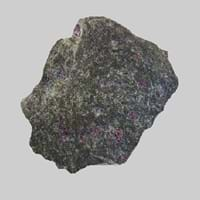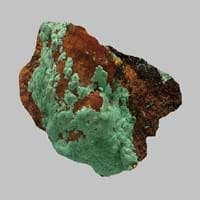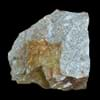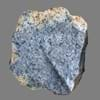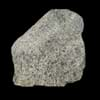Definition
Peridotite is a dense, coarse-grained plutonic is the main constituent of the earth's mantle
Gossan is intensely oxidized, weathered or decomposed rock, usually the upper and exposed part of an ore deposit or mineral vein.
Origin
Pike County, U.S
Indonesia
Discoverer
Unknown
Cornish Gossen
Etymology
From French, from peridot + -ite
From Cornish gossen from gos, blood from Old Cornish guit
Class
Igneous Rocks
Metamorphic Rocks
Sub-Class
Durable Rock, Medium Hardness Rock
Durable Rock, Medium Hardness Rock
Group
Plutonic
Not Applicable
Other Categories
Coarse Grained Rock, Opaque Rock
Fine Grained Rock, Medium Grained Rock, Opaque Rock
Texture
Phaneritic
Rough, Sandy
Color
Dark Greenish - Grey
Brown, Brown- Black, Gold, Green, Rust
Durability
Durable
Durable
Scratch Resistant
Yes
Yes
Appearance
Rough and Shiny
Dull and Banded
Interior Uses
Decorative Aggregates, Interior Decoration
Countertops, Decorative Aggregates, Interior Decoration
Exterior Uses
As Building Stone, As Facing Stone, Garden Decoration
As Building Stone, As Facing Stone, Paving Stone, Garden Decoration, Office Buildings
Other Architectural Uses
Curbing
Curbing
Construction Industry
As Dimension Stone, Cobblestones
As Dimension Stone, Cement Manufacture, Construction Aggregate, for Road Aggregate
Medical Industry
Not Yet Used
Not Yet Used
Antiquity Uses
Monuments, Sculpture, Small Figurines
Artifacts
Commercial Uses
Creating Artwork, Gemstone, Jewelry, Source of Chromite, Platinum, Nickel and Garnet, Source of Diamonds
Cemetery Markers, Commemorative Tablets, Gemstone
Types
Dunite, Wehrlite, Harzburgite, Lherzolite and Pyrolite
Translocated gossan and Leakage gossan
Features
Constitutes upper part of the Earth's mantle, Generally rough to touch, Host rock for Diamond, Is one of the oldest rock
Clasts are smooth to touch, Easily splits into thin plates
Archaeological Significance
Monuments
Used
Not Yet Used
Famous Monuments
Data Not Available
Not Applicable
Sculpture
Used
Not Yet Used
Famous Sculptures
Data Not Available
Not Applicable
Figurines
Used
Not Yet Used
Formation
Peridotites can be formed in two ways: as mantle rocks formed during the accretion and differentiation of the Earth or as cumulate rocks formed by precipitation of olivine and pyroxenes from basaltic magmas.
Earth movements can cause rocks to be either deeply buried or squeezed and hence the rocks are heated and put under great pressure.
Mineral Content
Amphibole, Chromite, Garnet, Magnesium, Olivine, Phlogopite, Plagioclase, Pyroxene
Apatite, Augite, Biotite, Bronzite, Calcite, Chert, Epidote, Feldspar, Hornblende, Micas, Plagioclase, Pyroxene, Quartz, Sulfides, Zircon
Compound Content
Ca, Fe, Mg, Potassium, Silicon Dioxide, Sodium, Titanium Dioxide
Aluminium Oxide, CaO, Fe, FeO, Silicon Dioxide, Sulphur
Types of Metamorphism
Burial Metamorphism, Cataclastic Metamorphism, Contact Metamorphism, Hydrothermal Metamorphism, Impact Metamorphism, Regional Metamorphism
Not Applicable
Types of Weathering
Biological Weathering, Chemical Weathering, Mechanical Weathering
Not Applicable
Types of Erosion
Chemical Erosion
Chemical Erosion, Sea Erosion, Wind Erosion
Grain Size
Coarse Grained
Fine to Medium Grained
Fracture
Irregular
Conchoidal
Streak
White
White to Grey
Porosity
Less Porous
Highly Porous
Compressive Strength
Not Available
Cleavage
Imperfect
Not Available
Toughness
2.1
Not Available
Specific Gravity
3-3.01
2.0
Transparency
Translucent to Opaque
Opaque
Density
3.1-3.4 g/cm3
Not Available
Resistance
Heat Resistant, Pressure Resistant, Wear Resistant
Heat Resistant, Impact Resistant, Pressure Resistant
Deposits in Eastern Continents
Asia
China, India, Indonesia, Kazakhstan, Russia, South Korea, Thailand, Turkey
China, India, Indonesia, Russia, Singapore, South Korea
Africa
Morocco, South Africa
Cape Verde, Ethiopia, Ghana, South Africa, Western Africa
Europe
Finland, France, Georgia, Germany, Great Britain, Italy, Kazakhstan, Netherlands, Norway, Spain, Switzerland, Venezuela
Albania, France, Germany, Great Britain, United Kingdom
Others
Not Yet Found
Not Yet Found
Deposits in Western Continents
North America
Canada, USA
Canada, USA
South America
Brazil
Brazil, Colombia, Ecuador
Deposits in Oceania Continent
Australia
New Zealand, Western Australia
New South Wales, South Australia, Western Australia
